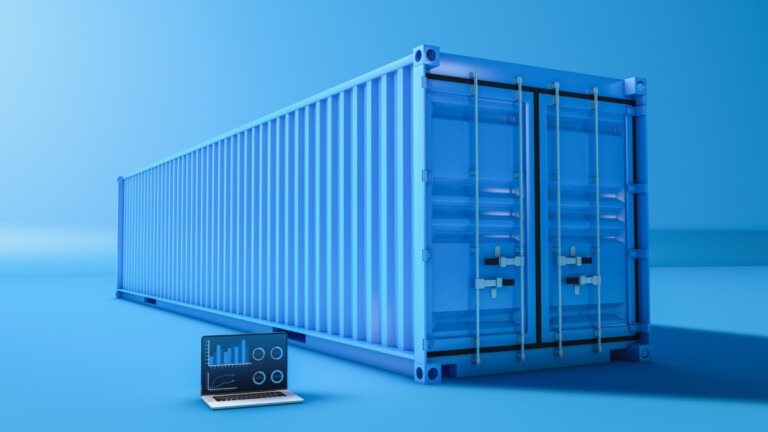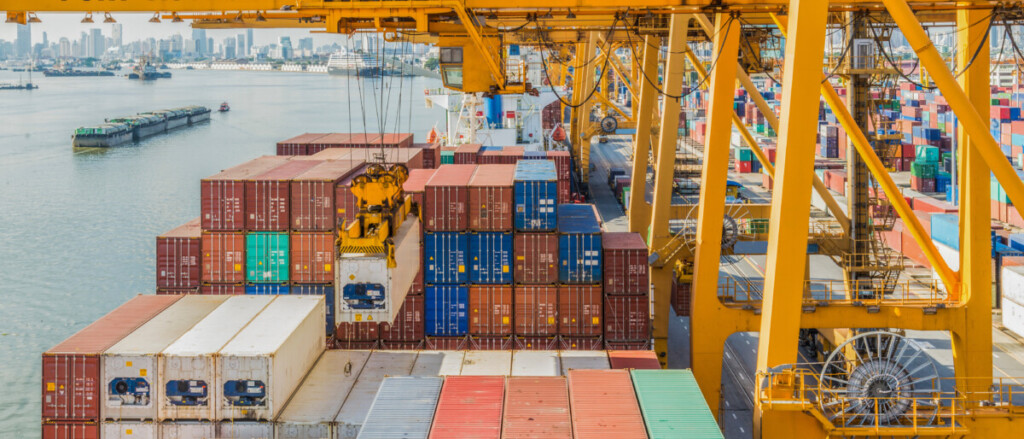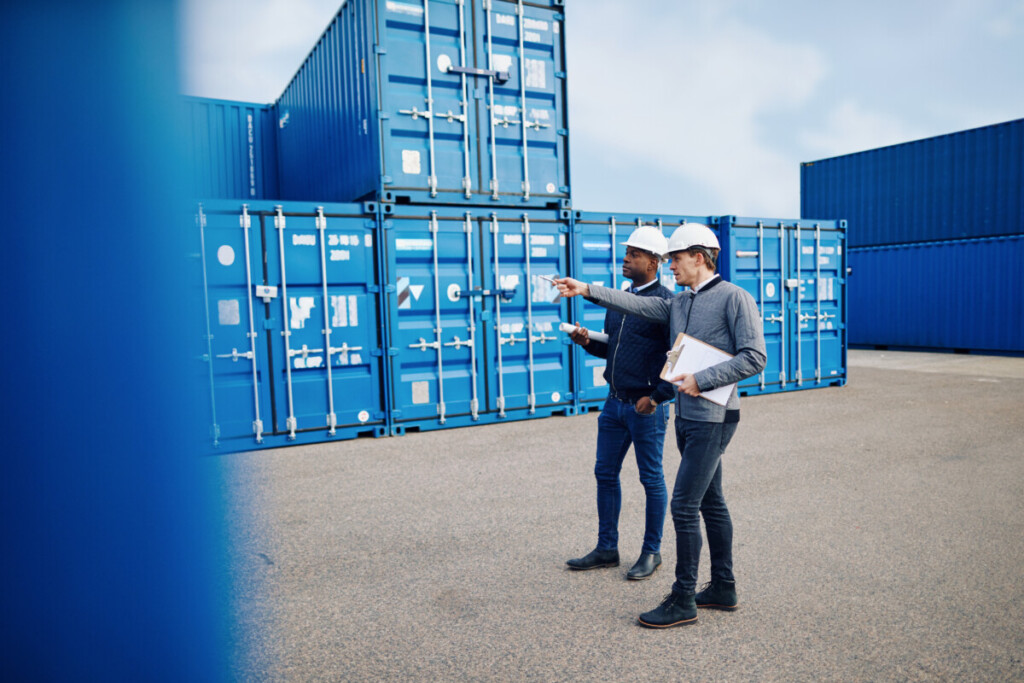How IoT Container Tracking Helps Keep Shipping Secure

Managing a supply chain can be tough, particularly when returnable transport items (RTIs) go missing between shipments. Whether they are pallets, racks, or even entire shipping containers, monitoring and tracking your assets are essential to global logistics. Given that the direct cost related to loss and theft of RTI is estimated to be between 10-30% of the pool of registered items, shipping concerns may want to invest in IoT container tracking.
By deploying IoT devices as an asset-tracking solution, an organization can easily monitor the status of its RTIs. Yet IoT container tracking involves much more than just GPS location data.
Let’s take a look at some of the business reasons why IoT container tracking could be essential to your logistics operations.

What Can IoT Container Tracking Do For You?
At the most basic level, IoT container tracking allows users – be they shipping operators, freight companies, container owners, or goods recipients – to know the location of any and all containers in a fleet. This is accomplished by affixing different kinds of sensors to the RTI to monitor everything from location to atmospheric conditions.
This level of visibility grants a number of benefits to every step of the supply chain. These include:
- Inbound Logistics – Know a container’s location at every step from manufacturer to supplier.
- Outbound Logistics – Track assets en route to end-delivery depots, providing customers and suppliers with the transparency required for up-to-the-minute ETAs for final delivery.
- Asset Tracking – Monitor transport conditions to keep tabs on the condition of products being shipped (e.g., perishable or sensitive contents).
- Inventory Management – Gather actionable insights on utilization to inform decision-making based on supply and demand.
- Container Security – Reduce lost cargo and theft by maintaining a vigilant eye on all materials.
These applications could benefit organizations from nearly any industry involved in shipping and logistics and can be utilized in any kind of container, be they dry or refrigerated.
How Does it Work?
Like many things that offer such versatility, IoT container tracking can seem deceptively simple. Containers are outfitted with a series of smart sensors and IoT-enabled tracking devices that can provide up-to-the-minute information on a container. These sensors can track everything from the location and temperature of the container to the amount of air flowing through it and the rate of condensation.
The truth is a bit more involved than that, as the logistics of implementing and managing a connected container tracking solution are multifaceted. Creating tech solutions that work in the often harsh conditions commonly faced when shipping goods is one major challenge, to say nothing of the logistical hurdles involved in inserting an IoT solution into existing business operations. Organizations that are able to overcome these hurdles, however, will find themselves with keen insights into their operations that can help optimize their shipping endeavors.
Those valuable insights are converted to workable data points and transferred, often via gateways, to a central IoT platform that is monitored by fleet operators and/or cargo handlers. Soracom users, for example, can keep tabs on an entire network of connected devices simultaneously from the Soracom User Console, with full control over every individual SIM in the fleet and a powerful API for easily exporting data from the IoT dashboard to your own custom console.
With this data in hand, an organization can make more informed decisions on the flow and future of its transportation operations. This includes a more granular understanding and control of supply chains, reduced waste in misplaced RTIs, more accurate ETAs for final delivery and depot points, and improved customer service, among other benefits.

IoT Container Tracking Benefits Security
While the benefits of an IoT container tracking system are myriad, there may be none more valuable to an organization than the increased security that comes with this asset-tracking solution. In the US alone, cargo theft is said to cost logistics companies around $30 billion each year, meaning keeping a shipment safe and secure is of the utmost importance.
Fortunately, much of the data drawn from modern sensors can help to monitor the security of a container. Some sensor technologies that could improve container security include:
- GPS Trackers – Monitoring the current location of a container can alert organizations of any wayward goods. This not only informs inventory needs and those of the supply chain but can make retrieval of misplaced items easier as well.
- Door and Movement Sensors – By including sensors that track when and if a container door is opened, fleet managers gain a better understanding of whether or not a shipment may have been compromised. These can be as simple as a door sensor indicating the container was opened to movement sensors tracking any vibrations that may have impacted a container’s contents.
- Temperature Sensors – Temperature sensors are an absolute must for refrigerated containers. They can provide a clear indication of a container’s integrity and are often included in compliance requirements and safety standards. Whether it’s a refrigerated or dry container, monitoring spikes and events in an asset’s temperature can be used to indicate a hole or some other structural damage to a container, identify improper storage in hot or cold areas, and provide warning for potentially dangerous events such as fires.
- Weight Sensors – Even subtle shifts in the weight of a container can indicate foul play and provide an organization with useful intel on the state of their shipment at any point.
This information can also be used to improve security protocols and better deploy security resources as needed. It could also potentially be a boon for any insurance claims related to lost or damaged goods, as the insights gleaned could be used to help resolve responsibility disputes about where/when the issue occurred.
Connectivity is Key For Asset Tracking
An asset-tracking solution is only as reliable as the network that connects it, so organizations deploying IoT container tracking will need to employ technologies that meet their needs for global connectivity.
Though cellular IoT connectivity is essential for these kinds of deployments, many organizations have found themselves reliant on a blended network of multiple connectivity technologies to ensure a truly global presence. Let’s look at a few technologies that can help to power your asset-tracking solution.
- Bluetooth – Ideal for short-range communication between devices and a gateway or connecting to a localized network.
- LPWAN – Low-power wide area networks are more dependable and have a longer range than Bluetooth but are reliant upon intermittent data transmissions that make real-time tracking an unrealistic option.
- Cellular IoT Connectivity – Cellular technologies can provide long-range connectivity and enable constant cloud uploads. Making it ideal for most asset-tracking applications.
- Satellite – Cellular connectivity can sometimes be impacted by geographical features and limitations, meaning containers in transit may need to move through areas without cellular coverage. As such, Satellite connectivity is a great addendum to a cellular network, as the truly global nature of satellite connectivity and increasing investment in the supporting infrastructure makes it a reliable part of a blended network, even it’s cost and availability may make it less apt as a sole solution.
………………
Got a question for Soracom? Whether you’re an existing customer, interested in learning more about our product and services, or want to learn about our Partner program – we’d love to hear from you



